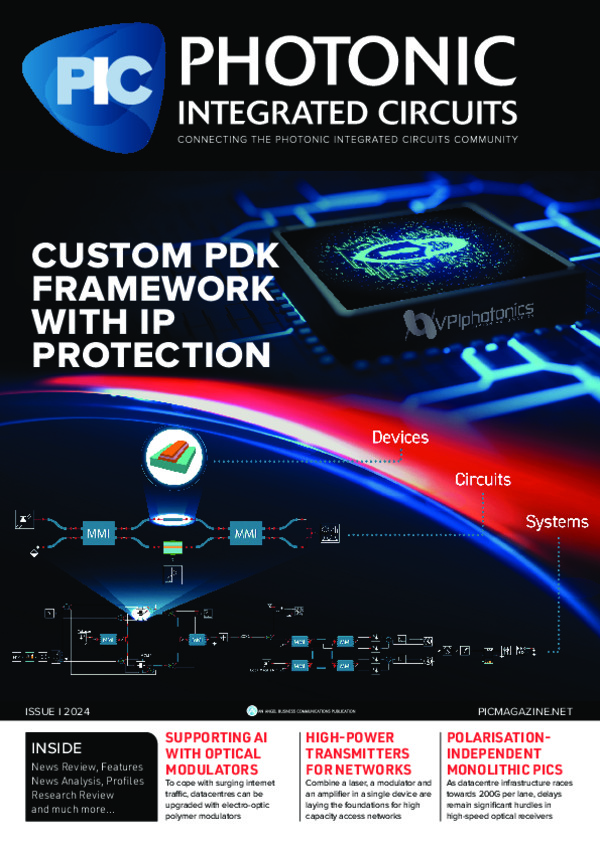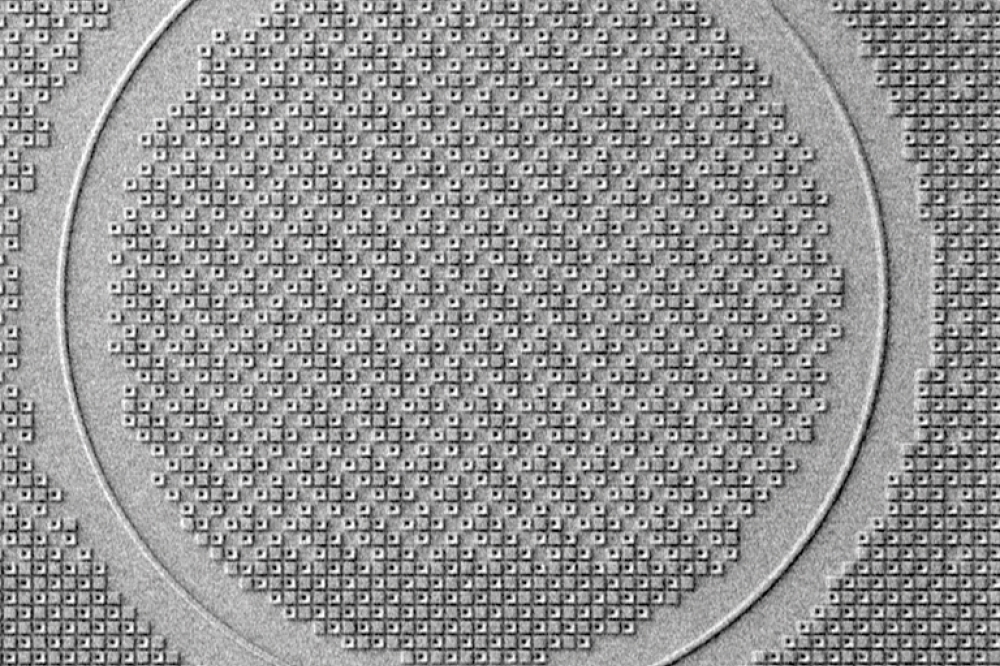
Getting the full PICture: Testing microring resonators with sub-picometre spectral resolution

Microring resonators are key components in many PIC technologies,
but, as their performance continues to improve, they require
increasingly precise test and measurement solutions. EXFO’s testing
platforms can help to address this need.
BY SOPHIE LANGE, BUSINESS DEVELOPMENT ENGINEER AT EXFO
AS THE FIELD of integrated photonics continues to advance, microring resonators have become a key enabler of this technology. The interferometric devices create very sharp spectral features, and can be used as ultra-sensitive detectors or as wavelength filtering devices in PIC-based low-linewidth tuneable lasers. They could also be used as compact and ultra-low voltage optical modulators, potentially proving to be a game-changer in the increasingly energy-hungry telecom and datacom industry.
As the name implies, a microring resonator consists of a ring-shaped waveguide placed close enough to a linear waveguide (or multiple linear waveguides) for some light to couple between them, creating a highly efficient optical resonator. The quality factor, or Q-factor, is a figure of merit of a device’s interferometric efficiency (the higher the Q-factor, the more efficient the device) and is directly linked to its spectral performance. With the development of low-loss structures and materials, interferometers based on integrated photonic ring resonators can achieve Q-factors of several million.
However, characterising devices like this is becoming more and more challenging. The spectral measurement of the Q-factor, among other performance parameters, needs to be tested with high accuracy and precision, but also within a short timespan, since a single integrated photonics wafer can count several thousands of these components.
Figure 2. Example of spectral characterisation instruments for the swept
laser method, consisting of the tuneable laser (T200S/T500S from EXFO)
and a bank of power meters integrated into a component testing platform
(CTP10 from EXFO). (DUT represents the device under test.)
This article details the key challenges associated with measuring these ring resonator structures and provides insights into how to achieve fast, accurate, and highly resolved spectral characterisation of optical microring resonators. A measurement of a high Q-factor resonator, provided courtesy of CEA-Leti, demonstrates a path to efficient characterisation of these key components of PICs.
Spectral characteristics of microring resonators
The base pattern of a ring resonator’s transmission spectrum consists of a Lorentzian-shaped trough corresponding to a resonance of the ring cavity. This pattern is then repeated at an interval that corresponds to the free spectral range of the resonator. These high-contrast features depend strongly on the ring’s physical and optical properties and on effective interaction with the nearby linear waveguide(s).
In recent years, ring resonators with a Q-factor of several million have been demonstrated and readily used as modulators, filters, or sensors. Such Q-factor values roughly translate into a spectral resonance bandwidth of less than 1 picometre with optical peak depths of several decibels. When characterising such devices, the spectral position of the peak, spacing between peaks, and their height and width provide critical parametric information that can determine whether the cavity can be used for the intended application.
Figure 3. Spectral response of a high Q-factor ring resonator using
resolutions of 1 picometre (red) and 20 femtometres (blue) measured with
the CTP10 component testing platform. Device courtesy of CEA-Leti.
This, however, poses a difficult challenge when it comes to acquiring such a spectrum. Reliable readings of both wavelength and optical power information are needed while passing through these extremely high-contrast features. As a result, the test instrument requires femtometre-scale spectral resolution and needs to deal with power fluctuation of 10 dB per picometre.
The best technique to perform a fast, reliable, and high-resolution spectral measurement of ring resonators is to use a continuously tuneable laser together with one or more fast detectors. The laser needs to cover the relevant operating wavelength range while offering low linewidth and good spectral quality to avoid measurement artefacts. The detection part of the test system needs to have excellent linearity and enough dynamic range so that the full spectral contrast of the device can be captured in a single measurement without any distortion or discontinuity.
Additionally, the overall system needs excellent wavelength accuracy and repeatability as well as high spectral resolution to collect all the data points at the correct wavelength with femtometre-scale precision within seconds. Finally, polarisation control is often required to ensure coupling of the signal into the correct transmission mode.
Figure 4. Example of a mode splitting spectral event (on the same ring
resonator as in Figure 3) at a spectral resolution of 20 femtometres
measured with the CTP10 component testing platform. Device courtesy of
CEA-Leti.
Efficient and fast spectral testing with femtometre resolution
Figure 2 shows a spectral characterisation solution where the component testing platform takes control of the laser and monitors the wavelength, power in, and power out of the device under test synchronously. Such systems have been demonstrated to also capture return loss and polarisation-dependent loss measurements and to provide high-quality spectral performance required for ring resonator testing.
Figure 3 shows a measurement performed on a ring resonator device with a Q-factor of 6 million, provided by CEA-Leti. The graph demonstrates the accuracy level achieved with the high-resolution mode of the test solution used in this case. Thanks to an “on-the-fly” optical wavelength detection, the laser wavelength is precisely determined at each tuning step, avoiding any measurement inaccuracies due to factors such as laser speed variation. Together with the fast, high-dynamic-range photodetectors, the Lorentzian shape of the resonance is spectrally resolved without any distortions or artefacts.
A system like this also provides highly repeatable measurements, ideal for characterising the resonance position versus other ring resonator parameters such as the applied voltage for phase-shift or thermal control. As a matter of fact, the system’s femtometre-scale acquisition allows the resolution of complex behaviour such as a mode splitting effect – a spectral event observed when defects in the ring create counter-propagating modes, resulting in two resonant peaks instead of one, as shown in Figure 4.
Ring resonators and integrated photonics as a whole are pushing the boundaries of spectral testing, as well as photonics measurement techniques more generally. Ever-increasing Q-factors require higher and higher spectral precision and resolution, and minimised testing time. This is a challenging but exciting time for test and measurement engineers and researchers alike.Main Image:. A ring resonator consists of a ring-shaped waveguide close to a linear waveguide. Picture courtesy of CEA-Leti



































